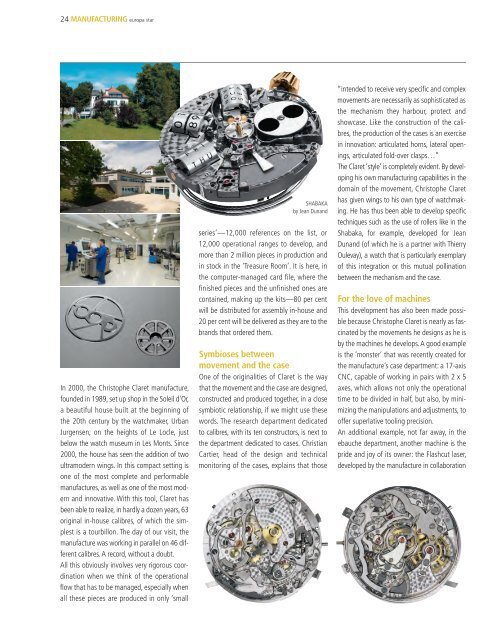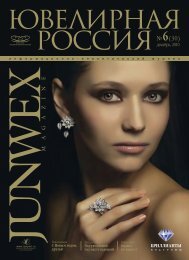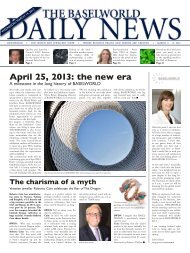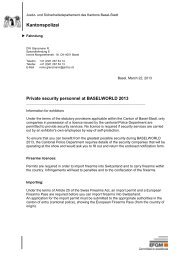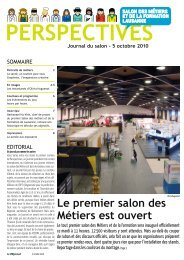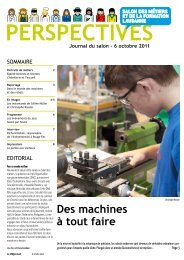MASTER MECHANICS
MASTER MECHANICS
MASTER MECHANICS
You also want an ePaper? Increase the reach of your titles
YUMPU automatically turns print PDFs into web optimized ePapers that Google loves.
24 MANUFACTURING europa star<br />
In 2000, the Christophe Claret manufacture,<br />
founded in 1989, set up shop in the Soleil d'Or,<br />
a beautiful house built at the beginning of<br />
the 20th century by the watchmaker, Urban<br />
Jurgensen, on the heights of Le Locle, just<br />
below the watch museum in Les Monts. Since<br />
2000, the house has seen the addition of two<br />
ultramodern wings. In this compact setting is<br />
one of the most complete and performable<br />
manufactures, as well as one of the most modern<br />
and innovative. With this tool, Claret has<br />
been able to realize, in hardly a dozen years, 63<br />
original in-house calibres, of which the simplest<br />
is a tourbillon. The day of our visit, the<br />
manufacture was working in parallel on 46 different<br />
calibres.A record, without a doubt.<br />
All this obviously involves very rigorous coordination<br />
when we think of the operational<br />
flow that has to be managed, especially when<br />
all these pieces are produced in only ‘small<br />
SHABAKA<br />
by Jean Dunand<br />
series’—12,000 references on the list, or<br />
12,000 operational ranges to develop, and<br />
more than 2 million pieces in production and<br />
in stock in the ‘Treasure Room’. It is here, in<br />
the computer-managed card file, where the<br />
finished pieces and the unfinished ones are<br />
contained, making up the kits—80 per cent<br />
will be distributed for assembly in-house and<br />
20 per cent will be delivered as they are to the<br />
brands that ordered them.<br />
Symbioses between<br />
movement and the case<br />
One of the originalities of Claret is the way<br />
that the movement and the case are designed,<br />
constructed and produced together, in a close<br />
symbiotic relationship, if we might use these<br />
words. The research department dedicated<br />
to calibres, with its ten constructors, is next to<br />
the department dedicated to cases. Christian<br />
Cartier, head of the design and technical<br />
monitoring of the cases, explains that those<br />
“intended to receive very specific and complex<br />
movements are necessarily as sophisticated as<br />
the mechanism they harbour, protect and<br />
showcase. Like the construction of the calibres,<br />
the production of the cases is an exercise<br />
in innovation: articulated horns, lateral openings,<br />
articulated fold-over clasps…”<br />
The Claret ‘style’ is completely evident. By developing<br />
his own manufacturing capabilities in the<br />
domain of the movement, Christophe Claret<br />
has given wings to his own type of watchmaking.<br />
He has thus been able to develop specific<br />
techniques such as the use of rollers like in the<br />
Shabaka, for example, developed for Jean<br />
Dunand (of which he is a partner with Thierry<br />
Oulevay), a watch that is particularly exemplary<br />
of this integration or this mutual pollination<br />
between the mechanism and the case.<br />
For the love of machines<br />
This development has also been made possible<br />
because Christophe Claret is nearly as fascinated<br />
by the movements he designs as he is<br />
by the machines he develops.A good example<br />
is the ‘monster’ that was recently created for<br />
the manufacture’s case department: a 17-axis<br />
CNC, capable of working in pairs with 2 x 5<br />
axes, which allows not only the operational<br />
time to be divided in half, but also, by minimizing<br />
the manipulations and adjustments, to<br />
offer superlative tooling precision.<br />
An additional example, not far away, in the<br />
ebauche department, another machine is the<br />
pride and joy of its owner: the Flashcut laser,<br />
developed by the manufacture in collaboration


